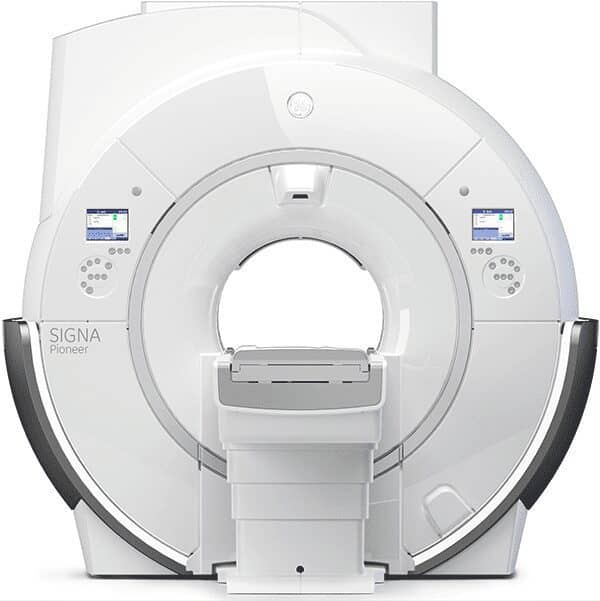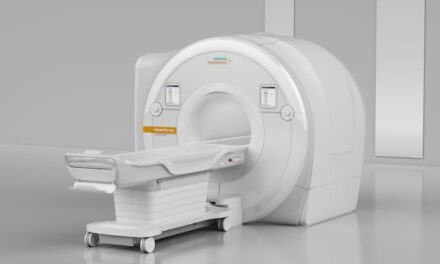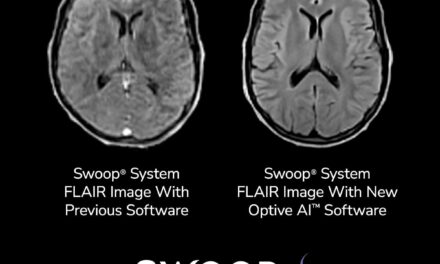MRI—despite being plagued by high costs—is one of the hottest imaging modalities around. Research firm Markets and Markets projects the MRI sector to grow at a compound annual growth rate of 5.1% from 2016 to 2021—reaching $7.19 billion—with the very high-field MRI segment seeing the biggest spike in utilization.
Eric Jean, senior vice president and general manager of global MRI at Andover, Mass.-based Philips Healthcare; Mike Ghazal, president/CEO of MRI and CT service at Lake Zurich, Ill.-based Zetta Medical Technologies; and Ioannis Panagiotelis, chief marketing officer of MR at GE Healthcare in Chicago sat down with 24×7 to discuss what’s fueling MRI growth. Don’t miss out.
24×7: The MRI market is projected to see exponential growth in the next decade. What’s propelling such high demand?
Panagiotelis: We see three main reasons for increased utilization: the aging population in developed countries, the increasing penetration of MRI in developing countries, and new and improved MRI applications. For example, we’re seeing an increase in procedures such as prostate, breast, and cardiac, as well as applications such as pediatrics and PET/MR. MRI is being used in ways we never had dreamed of before. That’s what’s so exciting about working in a growing modality: Our customers are developing new ways to diagnose and treat patients.
Ghazal: MRI technology has reached new levels of interest—including functional MRI, cellular imaging, and advance cardiac procedures—thus increasing utilization. Also, the general public has become more educated and knowledgeable about radiation exposure—making MRI the viable solution since it lacks ionizing radiation exposure. Although other modalities demonstrate the anatomy and pathology, MRI is hypersensitive to soft tissues, making it superior to distinguish pathology and diseases.
Jean: In the past, limitations on utilization were often operational: Exams took a lot of time; they required a very high amount of expertise; and results weren’t always reliable. Today, we’ve overcome many of these limitations. We’ve developed robust and fast techniques, which lead to more consistent imaging.
Radiologists and referring physicians know what they’re going to get when they order a study, which wasn’t always the case before.
As the technology has matured, we’ve also developed techniques for more indications. Oncology, for example, is one area that has led to increased utilization. Finally, we’re making MR more accessible. Now, people of all shapes and sizes can benefit from MR imaging—and, thanks to new techniques, even many patients with conditional implants can be safely and effectively imaged with MRI.
24×7: How has the MRI market evolved in recent years? How do you expect it to evolve even more in the future?
Ghazal: The MRI market has evolved to one of the leading imaging modalities. Its advanced applications provide proven results and compliment any imaging center’s services—providing the center with the tools to make accurate diagnoses. But we are looking through a small MRI window—and the future shows promise for growth in the field.
Panagiotelis: In recent years, MRI is expanding beyond just expert users in developed markets to new users in emerging regions, such as China, Africa, Southeast Asia, and Latin America. In the emerging markets, 80% of the systems that we are selling are going to first-time MRI users. This is an indication of the spread of the technology.
However, approximately 70% of the global population still does not have access to MRI; therefore, we foresee the further spread of MRI around the world in the coming years. And we are working to develop systems that are optimized for throughput, simple to use, and easy to site—which will help new users gain access to MRI.
Jean: As with many areas of health care, commoditization and standardization have affected the market. It’s critical to scan more patients with increased diagnostic confidence in order to make MR more accessible. The exciting thing about the MR market is that there is room for growth, as we develop new techniques. At Philips, for example, we offer a complete portfolio of neuro applications that will allow our customers to resolve complex neuro questions with more certainty, as well as unlock new neuro territories.
Another area that has evolved is the focus on making patients more physically and emotionally comfortable. Solutions have ranged from reducing the distressing level of noise to providing in-bore information to guide the patient while the scan is proceeding. As MR exams become faster and easier—and physicians and patients demand more definitive diagnoses—MR will grow in favor as a first imaging modality. Our goal is to touch more lives by providing improved MRI applications to empower diagnostic confidence.
24×7: What are some the biggest challenges currently affecting the MR sector? How is the industry working to overcome them?
Jean: There is a great demand for ease of use—push-button exams, fast exams—scanning that resembles CT in its reproducibility and speed. Given the many variables within MR, developing this simplicity is a big challenge.
MRI motion artifacts are calculated to lead to revenue loss for health care providers. The industry has developed many techniques to decrease artifacts, but they remain a challenge. One question we’re investigating is: “As more relaxed patients are less likely to move during an MRI scan, can improving the MRI experience help to reduce motion artifacts?” Adopting a holistic approach to improve the whole trajectory of the patient’s MRI experience may be key to resolving this challenge.
We focus our innovations on [helping to] deliver better care at a lower cost, while always keeping the patient at the center. This focus becomes even more relevant as hospitals face increasing quality and economic pressures.
Panagiotelis: MRI exams are still long; this can lead to an uncomfortable experience for the patient and not enough throughput for the clinicians. At GE Healthcare, we have been focused on improving the patient experience for several years with leading innovations, such as SilentScan, flexible and lightweight coils—and, most recently, MAGiC.
New applications and ways of scanning are helping to reduce scan time while maintaining image quality; MAGiC, for example, is one-and-done imaging technique, which delivers eight contrasts in a single acquisition in a fraction of the time of conventional imaging. We also see a lack of MRI specialists; in some markets, the growth of the needs has outpaced the availability of specialists that can operate MRI systems.
Ghazal: I think the cost of servicing and maintaining the MRI equipment is the biggest challenge. Institutions are looking for solutions to overcome the expenses of keeping the scanners operational. However, the industry’s outlook is good. More and more institutions are implementing in-house service departments to maintain their equipment. The greatest achievement by any institution is to prepare for product support, parts, tools, and expertise in this area. And the staff needs to be trained and supplied with avenues of support.
24×7: What are some of the biggest innovations in MRI right now?
Jean: First of all, it’s key to have a solid MRI architecture that is designed to give the flexibility needed to realize new ideas and to accelerate innovation since a flexible user interface and a programming environment aid in advancing MR research.
Also, innovation in scanning techniques is impactful. One example is scanning patients with conditional implants. The prevalence of conditions benefiting from MRI examinations, such as neurodegenerative diseases, cancer, and musculoskeletal diseases, increases with age. This aging population is also more likely to have artificial joints and/or cardiac implantable devices, which used to mean they were often unable to have MRI exams.
However, not all implanted devices are an absolute contra-indication for MRI anymore. Philips’ ScanWise Implant solution provides step-by-step guidance to enter the condition values of the implant manufacturer. The MR system then automatically applies these values for the entire examination. This is a real breakthrough that allows radiologists to serve patients who might otherwise be denied MRI studies. Another example is Philips’ mDixon XD, which provides complete fat suppression and allows you to obtain multiple contrasts from just one scan.
Panagiotelis: PET/MR is a major leap forward in recent years. As an industry, we are all excited to see how this technology will impact patient care. There are efficiency improvements for everyone involved: the clinician, tech, and patient.
Patients only need to do one scan, in the same room, at the same time. The tech needs to do only one set-up. And the radiologist reads the one scan with the integrated PET and MR data. PET/MR builds upon PET’s proven role in functional imaging and complements it with the unique benefits of MRI while opening the door to exciting, new clinical potentials enabled through the combination of PET and MRI molecular imaging agents.
Cardiac MRI is also a growing and developing field. MRI doesn’t do well with motion on its own; motion correction software is needed. However, because the heart beats so rapidly, cardiac MRI has always been a challenge. However, GE recently launched ViosWork, a cardiac MRI solution that seeks to help solve several cardiac MRI challenges at once.
It’s a point-and-shoot technology and lets clinicians see the heart in a completely new way. Clinicians have the ability to view the heart in this new way in the reading room, in the angio suite, at home, on their smartphone—courtesy of its cloud-based application.
With this free-breathing scan acquired in less than 10 minutes, ViosWorks can simultaneously provide key elements of a cardiac MRI exam: anatomy, function, and flow. The result is more quantitative information for the clinician to inform the diagnosis.
Ghazal: Improvements in the magnet design, hardware, and software have taken the MRI market to new heights. Scanners are faster, more patient-friendly, and are reaching exceptional levels in imaging at a fraction of the time of older equipment.
24/7: What else should biomedical engineers—those likely tasked with repairing MRI equipment—know about these devices?
Panagiotelis: MRI systems are becoming more software-heavy and less hardware-heavy. Apps are moving to the cloud, and this trend is definitely going to continue. Therefore, those servicing MRI systems will need to ensure they understand the software side well, in order to best help clinicians manage their systems.
Ghazal: First and foremost, MRI safety is key. Learning how to work around a magnetic field is important, as is understanding how to handle critical situations. The service team will also need to understand the proper usage of tools and test equipment around the magnetic fields. Additionally, having outside resources for parts, technical support, and ongoing training is also crucial.
Jean: With increased remote diagnostic capabilities, “over-the-shoulder” remote assistance, and responsive manufacturer service personnel, biomedical engineers have a host of expert resources at their disposal. They should know that they can view manufacturers as a partner in the use of MRI equipment to serve their patients. With increased remote diagnostic capabilities, biomeds can eventually become consultants—helping to run departments better and ensuring quality across hospital sites.





